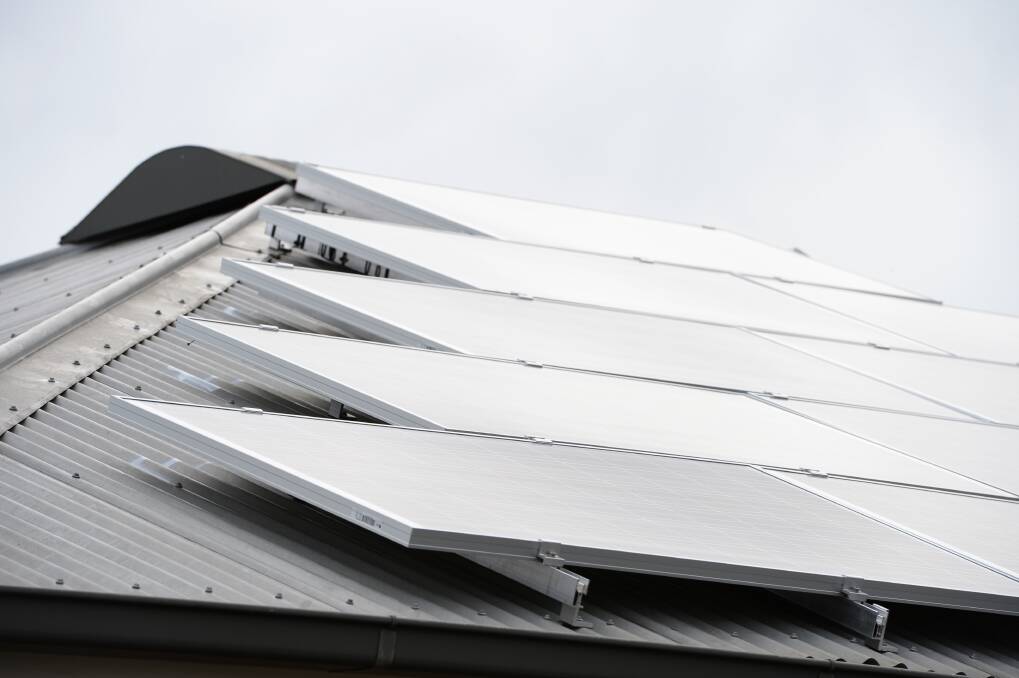
UPDATE – Wednesday, 12pm
Subscribe now for unlimited access.
or signup to continue reading
The state government has confirmed it will change the current feed-in tariff scheme for solar households from July 1.
Energy, Environment and Climate Change Minister Lily D’Ambrosio announced a “fairer” change to the tariff on Wednesday.
The proposed changes will enable renewable energy feed-in tariffs, which is the amount people are paid for the solar and wind power they produce for the electricity network, to be set with a payment for a household’s value to its environment.
The revised scheme is a result of the state government’s acceptance of major findings from the Essential Services Commission’s Final Report into the Energy Value of Distribution Generation, which was tabled in Parliament in September.
As recommended, annual minimum rates for feed-in tariffs will permanently move from calendar years to financial years to allow retailers time to adjust their systems. This will commence from 1 July 2017.
“Victorians should be fairly compensated for the power they generate – plain and simple,” Ms D’Ambrosio said.
However, Victorian Greens leader Greg Barber condemned the move.
"This is a total rip-off. (Around) 80,000 home and businesses will see hundreds of dollars added to their bills,” he said.
“Power companies will love it. They will take your excess solar power for six cents and sell it to your neighbour for 25 cents.”
FROM TUESDAY
More than 2300 solar households in the Ballarat region could receive a significant cut back from feed-in-tariffs obtained from the production of solar energy from January 1 next year.
The feed-in tariff is the minimum price per kilowatt hour that electricity retailers must pay customers (who are small renewable energy generators) for electricity they produce and feed back into the grid.
Currently receiving 25 cents per kilowatt hour for electricity they export, payments to Victoria’s 80,000 solar customers could be cut to as low as five cents per kilowatt hour in the new year, if as feared, the state government cuts the tariff again.
A family with a 2.5kW system currently earns around $300 per year for the power they feed back into the grid. This could drop by three quarters to just $75 next year.
A statement from Greens leader Greg Barber’s office said the state government and opposition voted against setting a “fair price” for solar electricity exported into the grid.
Despite the planned cut, a Essential Services Commission inquiry has recommended that the tariff be raised.
Mr Barber said the tariff is important to ensure solar remains an enticing option for energy production.
“This Minister (for energy, Lily D’Ambrosio) has cut solar payments twice and now she’s getting ready to cut again,” Mr Barber said.
“The Greens want solar homes and business to be paid a fair price for the energy they produce. Currently retailers resell this electricity for around five times as much as the solar household receives for generating it, which just isn’t fair.
“Solar is booming and reducing emissions. We should encourage people to install solar panels and stay connected to the grid, but the Government is punishing them instead,” Greg Barber said.
The first of two state government findings into the feed-in tariff is complete, while the second review will completed in 2017. The finding will be implemented following the second review.
A spokesperson for Ms D’Ambrosio labelled Mr Barber’s comments as “misleading”.
“Once again Greg Barber is misleading the community,” the spokesperson said.
“He knows that the government wants to replace the current flawed scheme that was put in place by the coalition.
“The Andrews Labor government is conducting two reviews to determine a fairer feed-in tariff and we'll act on the experts' advice.
“The renewable energy industry has praised the government's approach as the best in the country, but the Greens are more interested in political stunts.”
It’s still unclear if a change will come into effect from January 1.














